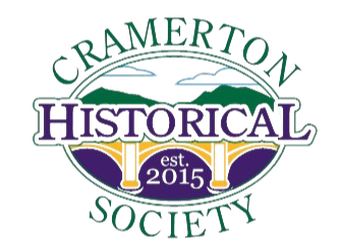1926 - 1940
1926: Dam was built downstream on the South Fork River, water backed up to form Cramer Lake and Cramer Pond.
1926: A World War I Cannon was placed as a war memorial by Mr. Cramer. The cannon was located across the Street from First Baptist Church and on the grounds of the Hotel. It became a meeting place and hangout for the guys. The cannon was donated to the US Military for much needed scrap metal during World War II.
1927: Finishing Department added to Mayflower Mill. Cramerton now has an autonomous textile manufacturing unit, making yarn from raw cotton, weaving yarn to cloth, dying, finishing and shipping to customers.
1927: Cramerton golf course is a marvel of national beauty with excellent engineering as stated by the Gastonia Daily Gazette. “The course is for the use of the employees and business associates and guests of the Cramer's."
1929: Cramerton mills developed the famous 8.2-ounce “Army Kaki” (also known as Cramerton Army Cloth) became the standard basic uniform cloth throughout the armed forces. This fabric saw service through World War II, the Korean War & the Vietnam War.
1929: Cramerton School reached full capacity and students were sent to Brookland Circle and the Company Store in Old Town.
1930: Five Cramerton citizens were involved with four masked robbers around 3:30 a.m. after looting four stores in downtown Cramerton. The four were later arrested in Charlotte, and two had marks of shotgun wounds around their faces.
1934: Luther Lineberger started frying fish in the front yard of Buck Armstrong's house in Lakewood. This was the beginning of Lineberger's Fish Fry.
1935: Mr. C.C. Dawson named Vice President of manufacturing and elected as a company director. He also retained the tile of General Manager at the age of 50.
1935: Ruth Randall, a resident and employee of Cramerton Mills, died when a car she was riding in crashed into the bridge and plunged into the South Fork River.
1935: Buck Armstrong delivered payroll including Silver Dollars for any amount less than $5.00.
1935: Thompson sub-machine guns were used to protect the payroll delivery to Cramerton mill employees.
1936: The Cramerton School newspaper, The Weaver, was founded.
1938: Cramerton shares in hysteria over the big radio scare. Cramerton, like many other parts of the nation was thrown into a panic and confusion last night by the CBS Radio Broadcast by Orson Wells dramatizing H.G. Weeks’ imaginary version of what would happen if an army from mars should invade America.
1938: Cramerton Church of God was organized in 1932 with the first building erected in 1936. The building was destroyed by fire the following year. Services were held in the Cramerton Theatre until the new brick Church was built in 1938. It was the “First” brick Church of God built in North Carolina. Original site where Baker's Furniture is currently located. Rev. Henery, after relocating across the street, led the church through several building programs including: a Parsonage, Fellowship Hall, and a Sunday School facility to meet the growing needs of the church.
1939: Mr. Stuart W. Cramer Sr. became Chairman of the Board at the age of 71.
1939: Major Stuart Cramer Jr. promoted to President of Cramerton Mills, at the age of 47.
